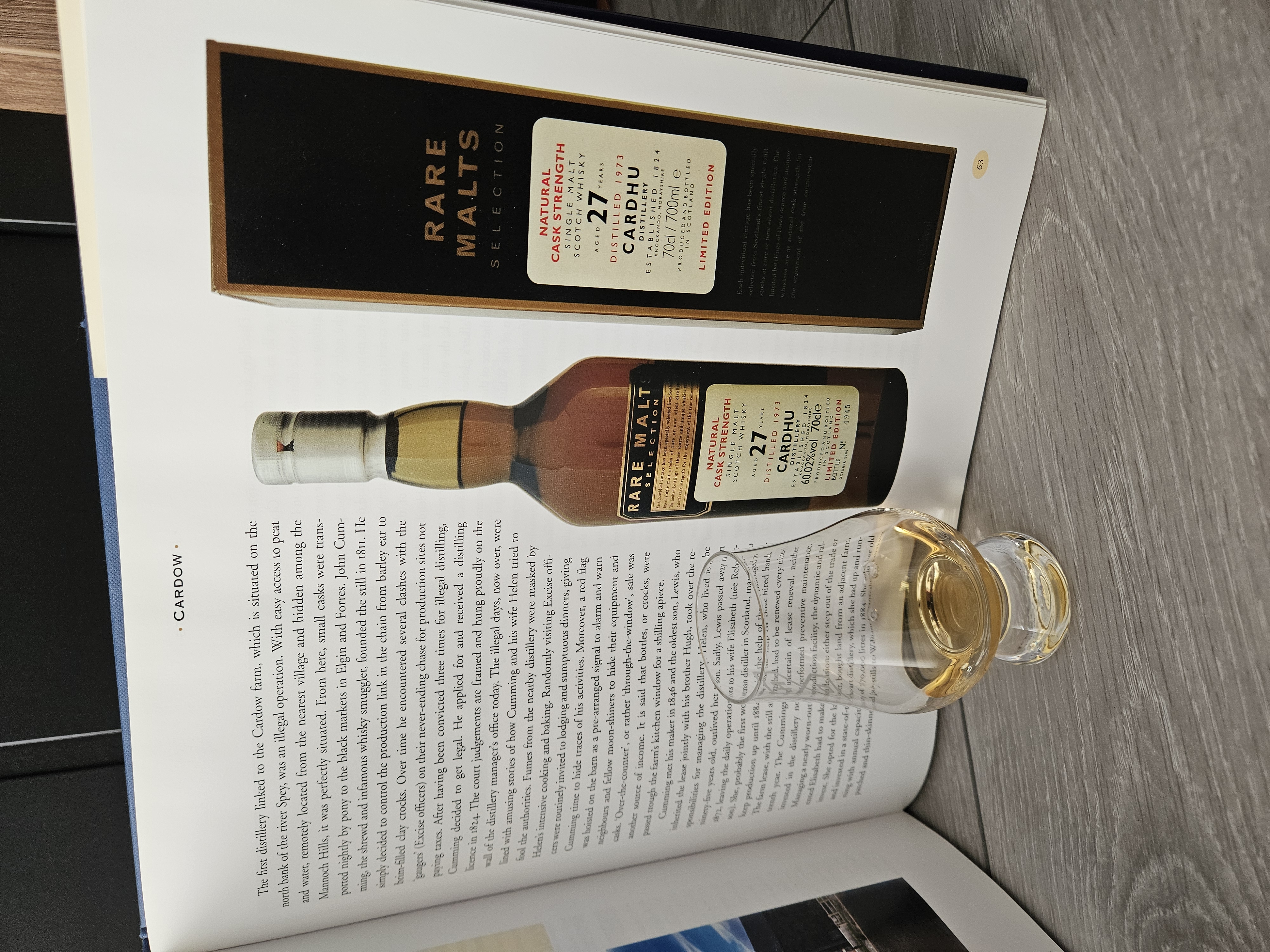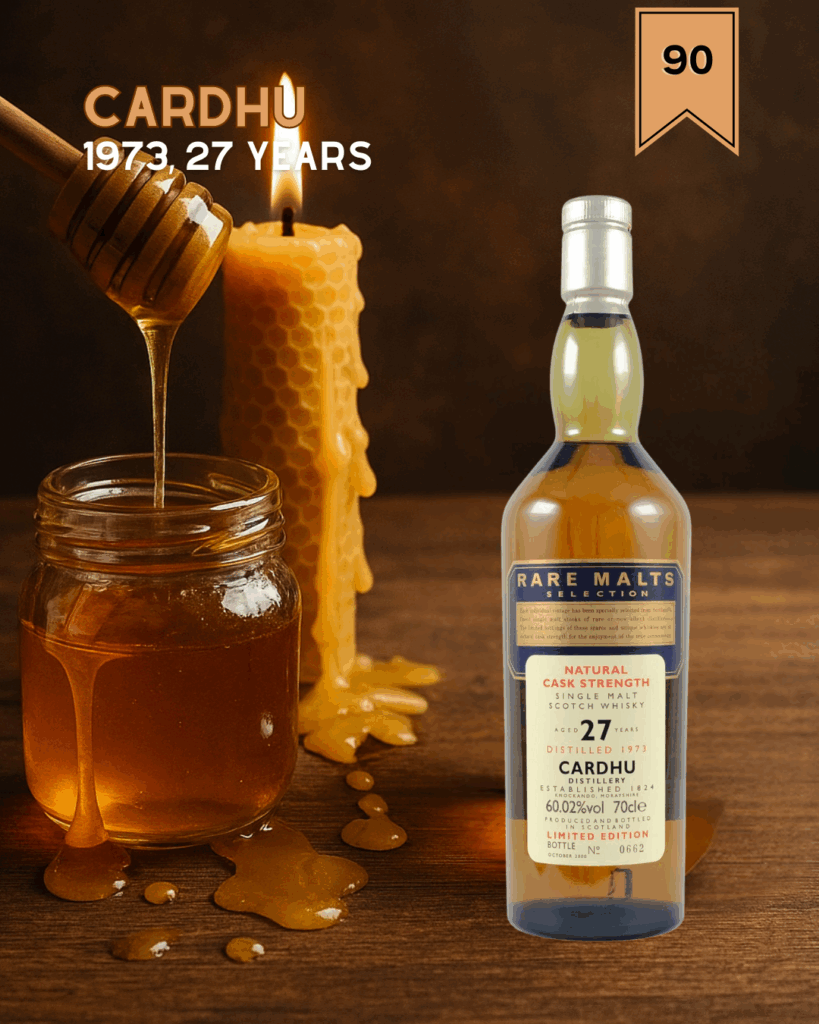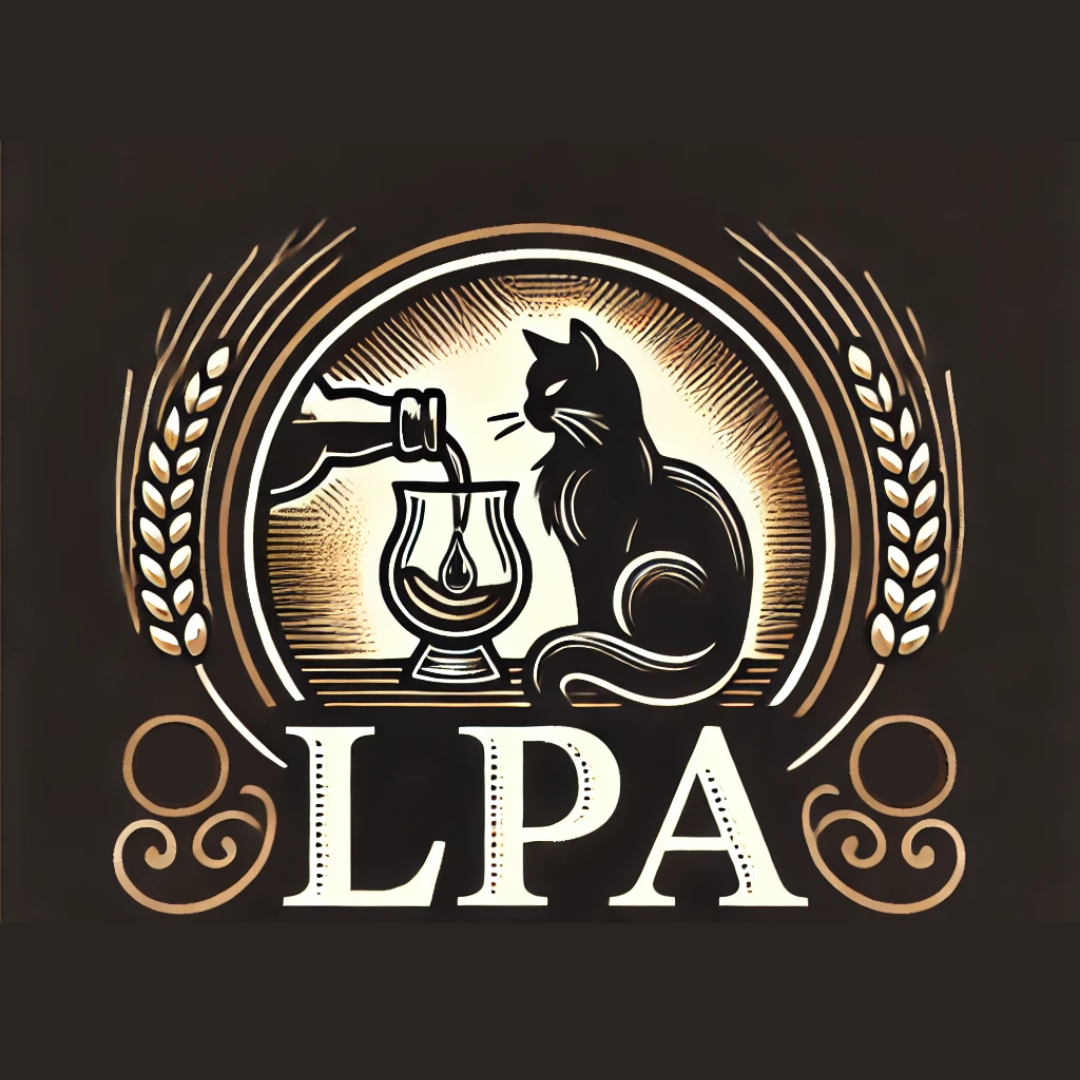Cardhu Rare Malts Selection: a rare expression indeed!
In our periodical series in which we highlight expressions in the Rare Malts Selection, we arrive at a Speyside we do not often see outside the trodden path. Indeed, Cardhu single malt is a very popular whisky and appears mostly in these lovely square dumpy bottles. In the yearly Special Releases by Diageo, we have seen some more variations over the years. Today, we take a look at a rare expression indeed, and part of the Rare Malts Selections.
We make this blog hot on the heels of the 200th anniversary of Cardhu last year, for which a special bottling was released that we reviewed here. There you can read about the remarkable historic role Cardhu played in establishing legislation for the naming of different categories in whisky, like single malt, blended malt and blended Scotch. We will skip that part of the illustrious legend that is Cardhu, and do a deeper dive into history.
The place we know by its Gaelic name of Cardow, coming from Creag dubh, means “the black rock” and this refers to the Mannoch Hills that are close to the location. Indeed, the distillery was by times known as Cardow. What the official name is nowadays, well, the documentation I have on it is quite confusing. According to Ulf Buxrud in his standard work about the Rare Malts Selection, the name was switched to Cardow officially in 2004. The Malt Whisky Yearbook makes mention of the name switching game as well. John Walker & Sons purchased the distillery in 1893, and changed the name to Cardow in 1908. Then, according to the timeline, the name was changed to Cardhu in 1981. A quick internet search underlines that latest version, so I guess we caught Buxrud in a mistake. The year 2004 was however the year when the controversy about the single malt / pure malt was resolved, so we are guessing this caused the mix-up in the book.

The name John Walker has been mentioned now, but there was a time before that famous blending family came into the picture. In these beautiful Speyside hills, hiding illegal activities was of course easy peasy, with no village in sight and under the cover of the Cardow farm. Casks with produce would roll out the hills on horsedrawn carriage towards black markets of bigger cities in the area, most certainly Elgin and Forres. Cardhu probably came to life around 1811, and its spiritual (in every sense) father was John Cummings. His name was known far and wide as whisky smuggler, and he ran into law enforcement more than once. Being tired (probably) of being convicted again and again, he went legal as soon as possible, and joined The Glenlivet in being the frontrunner of official distilling in the highlands, when laws changed in the year 1824.
From John Cummings via his sons Lewis and Hugh, the lease to distil ended up in the hands of daughter-in-law Elisabeth Robertson. It is assumed that she is the first woman distiller in Scotland and she kept production going until 1884. This year marked a great investment in the distillery, that had been a bit downtrodden at that point. Interesting intersection of history here: Elisabeth sold her old and worn out stills to one William Grant. He was managing director at Dufftown’s Mortlach Distillery at the time, and with this buy he got into business for himself. He went on to erect the Glenfiddich Distillery, to this day still one of the three biggest single malt brands in the world. Beautiful how history works, eh?
The reputation of Cardow stood proud amidst many copycats who started adding “-Glenlivet” to their name, to ride on the reputation of The Glenlivet Distillery. The quality of the Cardhu distillate was however also known, and to many a blender, not in the least John Walker from Kilmarnock. The company already took a big share in the ownership, before buying the entire distillery in 1893. The Cummings family was kept on to manage, and Elisabeth’s son and grandson John and Ronald remained in the company for decades to come. Ronald was even chairman of the Distillery Company Limited (DCL), the current day Diageo. It only goes to show how ingrained and intertwined Cardhu is with not only the success of Johnnie Walker blended Scotch, but also the parent company. From humble and illegal beginnings to a whole Whisky Kingdom!
With John Walker behind it, Cardhu received many upgrades and still expansion. In the early 1960s another expansion was done, with the number of stills being six then. This is the capacity now, resulting comfortably north of 3 million litres per annum. The sample of the 1973 we are going to taste later on came from indirectly heated stills, where they were coal-fired until 1971. With this, Cardhu was again pivotal for the industry. Already between 1922 and 1924 the distillery worked with indirect fired stills. Back then, it was deemed too expensive, but in the 1960s Cardhu led the way into what would become industry standard. Cardhu was also one of the first distilleries with a visitors centre. As an integral part of the Johnnie Walker blends, Cardhu’s future seems secure. Indeed, together with Glenkinchie, Caol Ila and Clynelish, Cardhu has been named one of the four corners of Scotland, and the flag of Johnnie Walker flies more visible than ever.

Cardhu 1973, 27 years old, bottled at 60,02 % abv
First things first: The 1973 vintage Cardhu that was bottled at 27 years of age, while there is also an expression at 25 years of age, exclusively for the American market (put into 750 ml bottles). Cardhu has no other entries in the Rare Malts Selection, so rare indeed! This expression was bottled in October 2000. Remarkably precise abv mention. Let’s see what that extra 0,02 % will do to our palate!
Upon Sipping: From the earliest days of single malt marketing, Cardhu quickly joined Glenfiddich with putting themselves on the map as ‘a whisky for the educated palate’. And then a mention of being a Highland single malt. Admittedly, the Speyside region was still in its infancy back then. Is Cardhu a Highland malt in Speyside clothes? Judging by the nose, the early 1970s clearly put a stamp on this Cardhu, with waxy notes that would not look out of place in a Clynelish bottle. Lots of candle paraffin and honeycomb. Some layers of ozone. Sunflower oil. And that is about as far as we can go without destroying our nostrils! We take a sip first before toying with the pipet.
The 27 years of ageing put a major imprint on this Cardhu, making it honey sweet and riddled with waxy notes. My oh my, this could easily be confused with an old style Clynelish. Very complex, even though the palate delivers a straightforward character. I am very impressed. A friend of mine had a bottle of this in his cellar, so I tasted it a few times over the years, but I don’t remember it as waxy as it comes out of the bottle today.
With water we get some nuances, now with strong floral hints of fields of grass and blooming daisies. It maintains that strong honeyed character. The taste changes a little, the water brings out more wood influences, but this is a 27 years old whisky, so we can handle that.
The wood in which this Cardhu matured can’t possibly have been first fill, even second fill can be disputed. (For blending stock, casks would sometimes be used up to five times, dixit Buxrud.) This is very distillate driven, and I love it! We are going to put in a final drop of water now. Not much change anymore now, only even more approachable. The whole flower garden is open, and we are invited to take as many wildflowers as we want. The taste became even sweeter, almost candied, this honey is just delicious. After a long while, more fruit comes onto the scene, including peaches. The waxes on the finish makes me conclude: yes, old highland style.
Word to the Wise: If it weren’t for the notoriously bad cork stoppers on these bottles, I would say we stash away as many bottles as we can. Their contents seem to develop over the years in the glass. For this Cardhu, we can say it spent almost as many years in glass as in wood, and both have had an impact. A very Clynelish-esque Cardhu, an absolute gem of a single malt. Maybe too straightforward to aim for much more than 90+ points, but a rounded score is justified.
Score: 90 points.

